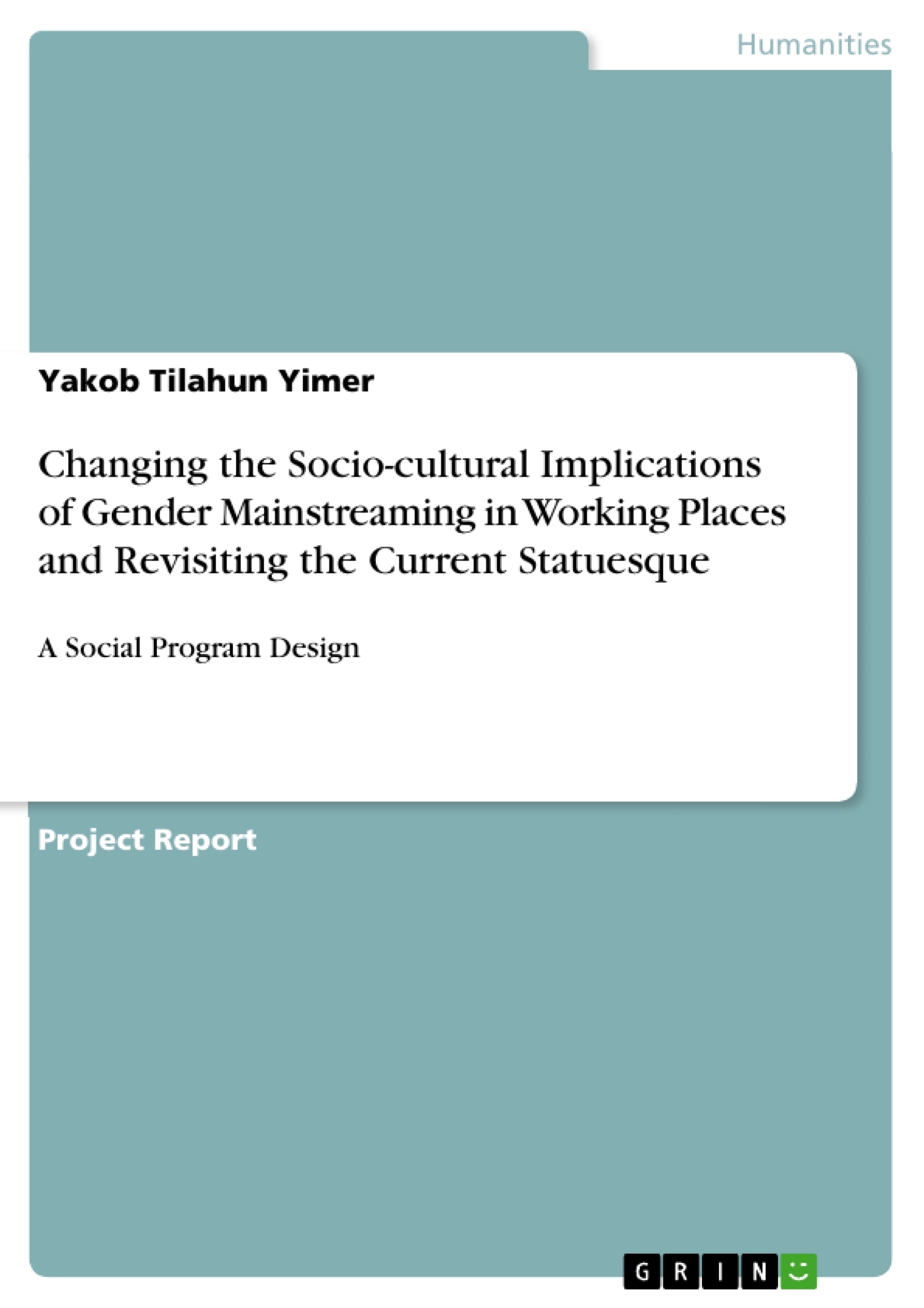Scholars began to study gender and organizations to understand better the dimensions of and reasons for continuing inequality between women and men in the workplace and the economy. Most research on gender structures has been done in public and private employing organizations, but researchers have also examined voluntary organizations such as religious groups, charitable organizations, and sports associations. Although gender patterns in organizations vary between the public and private sectors and between different sectors of the private economy, as well as between different societies. In doing so the main rationale of the program is to revisit the gender based programs that are established in the country (Ethiopia) and further develop a practical approach that contributes to the fullest potential of the gender mainstreaming and its longer effect in each and every civil servants. In other words, the society at large and the application of this social program will substantiated by different projects that are framed on the basis of the program at hand.
Table of Contents
1. Introduction and Rationale of the program
2. Situation statement ,problem analysis and justification
3. Objectives of the program
3.1 General objective of the program
3.2 Specific objectives of the program
4. Target groups and beneficiaries
5. Program collaborators, partners and stakeholder
6 .Program Contents and Project activities
6.1 Project strategies
6.2 Logic Frame of the program
6.3 Monitoring and evaluation of the program (M &T)
7. Conclusion
References



